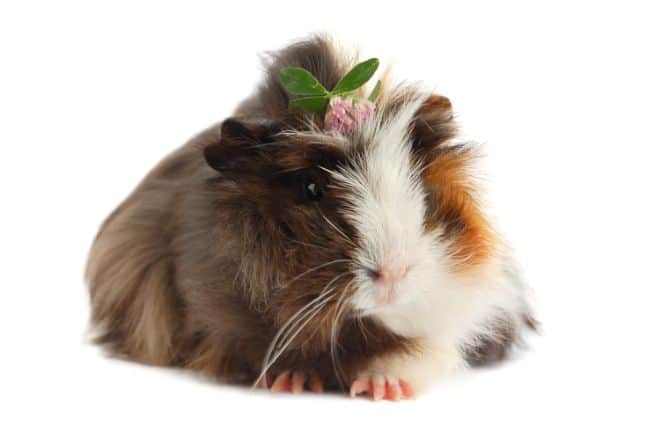I cannot overemphasize the importance of proper nutrition for our guinea pig friends. A balanced diet is essential for their overall health and wellbeing.
One question that often arises from guinea pig owners is whether celery is safe for their pets. In this blog post, we will discuss the benefits and potential risks of feeding celery to guinea pigs, as well as best practices for incorporating it into their diet.
Luckily, guinea pigs can indeed eat celery in moderation as long as it’s properly washed. It shouldn’t be a large part of their diet, but giving it to them on occasion will not harm them and can even provide some benefits caused by the various nutrients found in this vegetable.

Benefits of Feeding Celery to Guinea Pigs
Celery is a low-calorie vegetable that is rich in vitamins and minerals, including vitamin C, vitamin K, potassium, and folate. Guinea pigs, like humans, cannot produce their own vitamin C, so they need to obtain it from their diet.
Celery is an excellent source of this essential vitamin, which helps to boost their immune system, prevent scurvy, and promote healthy skin and coat.
In addition to its nutritional value, celery can also provide guinea pigs with a satisfying crunch and help to keep their teeth clean and healthy. However, it is essential to note that celery should not be the only source of vitamin C in a guinea pig’s diet, and it should be fed in moderation.
The recommended serving size of celery for guinea pigs is approximately one inch of celery per day. It is best to introduce new foods gradually to avoid digestive upset.
Potential Risks of Feeding Celery to Guinea Pigs
While celery can provide many benefits to guinea pigs, there are also potential risks associated with feeding it to them.
Celery has a high water content, which can cause diarrhea in some guinea pigs if fed in large quantities. Additionally, celery is high in fiber, which can cause bloating and gas if overfed.
Another potential risk of feeding celery to guinea pigs is its high level of oxalates, which can contribute to the formation of bladder stones. Therefore, it is important to limit the frequency and quantity of celery in their diet.
Best Practices for Feeding Celery to Guinea Pigs
Before feeding celery to your guinea pig, it is essential to wash it thoroughly to remove any dirt and pesticides. It is also recommended to cut it into small pieces to make it easier for them to eat and to prevent choking.
As mentioned earlier, the recommended serving size of celery for guinea pigs is approximately one inch per day. It is best to introduce new foods gradually and to monitor your guinea pig’s digestive health.
To ensure a balanced diet, celery should be only one part of your guinea pig’s diet. You can combine celery with other safe vegetables and fruits, such as carrots, cucumbers, and apples.
Alternatives to Celery for Guinea Pig Consumption
If you are hesitant to feed your guinea pig celery, there are many other safe vegetables and fruits that can provide similar nutritional benefits. Some examples include:
- Bell peppers
- Broccoli
- Carrots
- Cucumbers
- Kale
- Romaine lettuce
- Strawberries
- Blueberries
When introducing new foods to your guinea pig’s diet, it is best to start with small quantities and monitor their health closely. If you notice any signs of digestive upset, such as diarrhea or bloating, it is best to discontinue that food and consult with your veterinarian.
Conclusion
In conclusion, celery can be a safe and healthy addition to a guinea pig’s diet when fed in moderation. It is a good source of vitamin C and can help to keep their teeth clean and healthy. However, it is essential to limit the frequency and quantity of celery in their diet to avoid potential health risks.
Remember that a balanced diet is critical for your guinea pig’s overall health and wellbeing. If you have any concerns about your guinea pig’s diet or health, consult with your veterinarian for personalized recommendations.
- How Long Do American Eskimo Dogs Live? Important Factors and Care Tips - September 29, 2023
- Do American Bulldogs Need Grooming? Essential Tips and Care Guidelines - September 29, 2023
- Do Bengal Cats Enjoy Playing? Essential Tips for Keeping Them Active - September 29, 2023